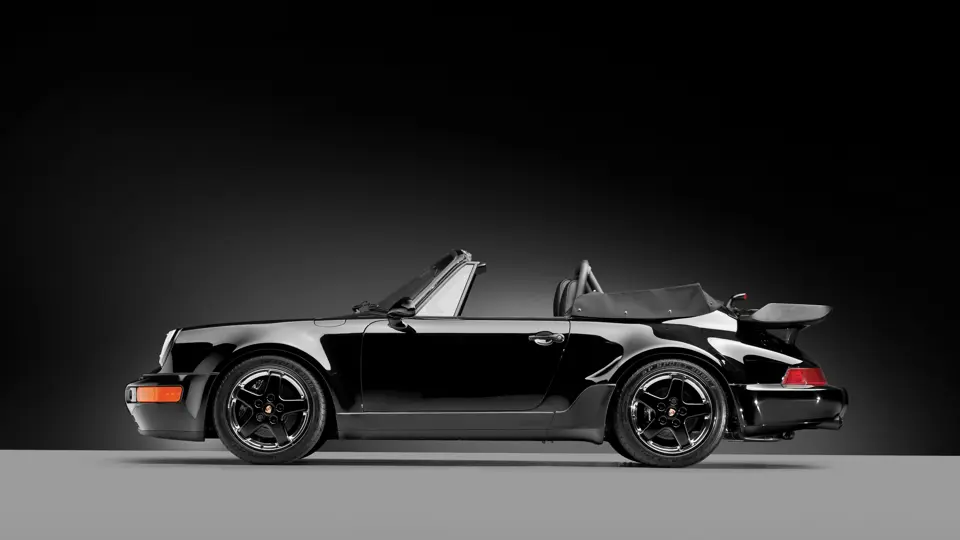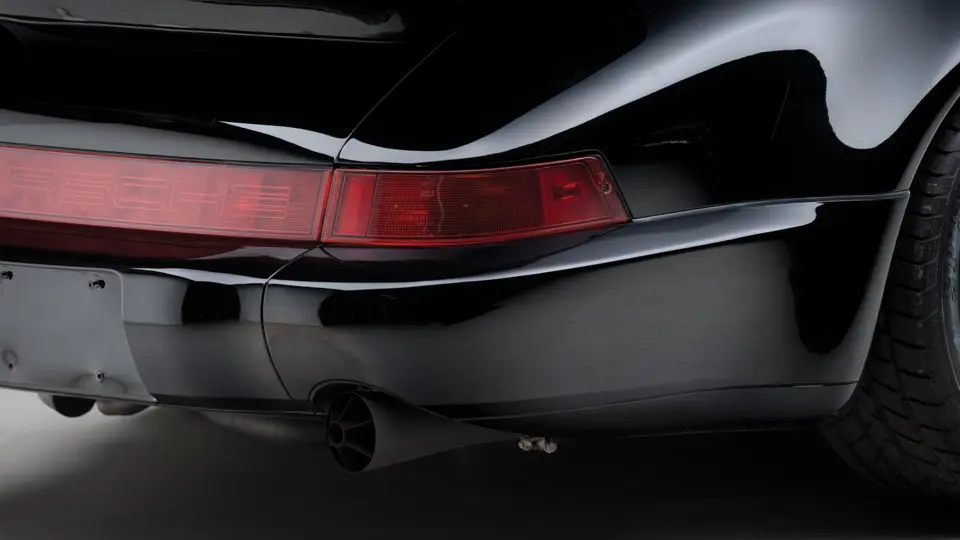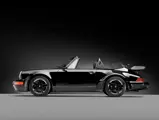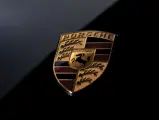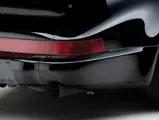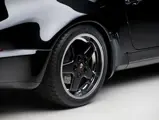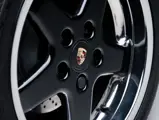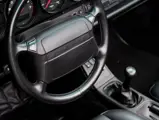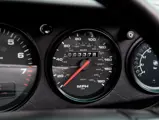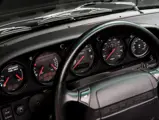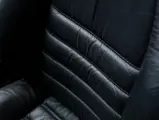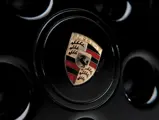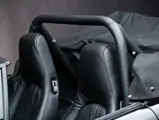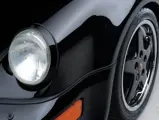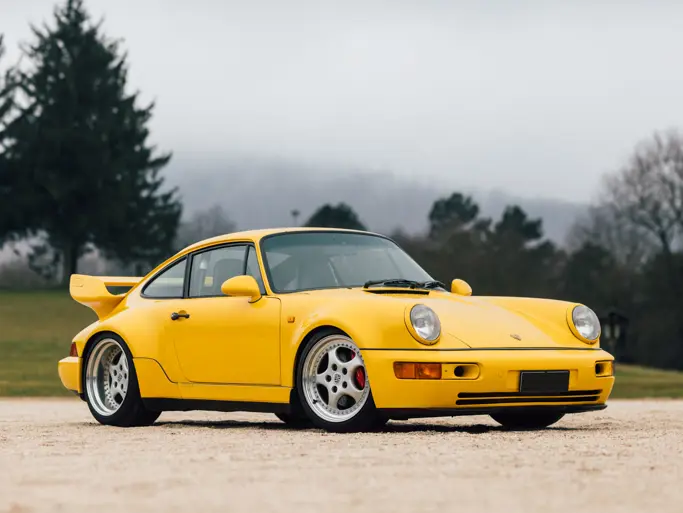964 SERIES. Turbocharged and intercooled SOHC flat six-cylinder engine, fuel injection, five-speed manual gearbox, four-wheel independent suspension, and hydraulic four-wheel disc brakes. Wheelbase: 89.4"
Porsche’s initial work with turbocharging their racing cars during the late-1960s and early-1970s, led to the development of a turbocharged street version of the 911. While initially required to comply with the FIA’s homologation regulations for GT-class racing, development continued unabated when the rules changed. The new car was repositioned as a fully-equipped road model to lead the 911 series and compete directly with the costlier and more exotic “supercars” from Ferrari and Lamborghini.
Ernst Fuhrmann led development, adapting the technology developed for the all-conquering 917/30 Can-Am car to the 3.0-liter flat-six from the Carrera RS 3.0. As racing fans will immediately recognize, the 917/30 remains infamous today as “the car that killed Can-Am,” because of its dominating, opposition-crushing performance. Suspension refinements, larger brakes, and a strengthened four-speed manual gearbox rounded out the package. A functional “whale-tail” rear spoiler increased cooling airflow to the rear-mounted engine and provided additional rear downforce. Wider rear wheels with upgraded tires resided within flared wheel wells, increasing grip and stability at speed.
Simply known as the “Turbo,” the new vehicle was released in the spring of 1975, with export to the U.S. commencing in 1976. In 1978, power output reached 300 hp (DIN), with a displacement increase to 3.3-liters and the addition of an air-to-air intercooler. Porsche’s continuous development included slight revisions to the rear spoiler to accommodate the intercooler. Braking was significantly upgraded as well. Porsche’s careful and relentless development program also ensured that the 930 was a sound base for racing vehicles and led to the highly successful 934 and 935 racing cars. The 930 proved fast but demanding; however, skilled drivers quickly learned how to drive the 930 properly and to drive the car beyond the limits of most other sports cars.
The 964 generation of 911s, introduced in the late 1980s, was no exception. Retaining Porsche’s highly developed air-cooled flat “six,” the Turbo delivered nearly unbelievable performance statistics. Although the rear-engine setup and traditional design formula remained unchanged, Stuttgart had produced a supercar with 320 brake horsepower and acceleration from rest to 60 mph in just 4.9 seconds, in showroom-stock tune.
Appearance-wise, the 964-series 911 models retained their distinctive and purposeful styling. Priced from about $64,000 for the Carrera 2 and almost $100,000 for the Turbo, by 1992, Porsche’s 911 was a stunning automobile in every respect. Despite the early-1990s economic recession, however, some owners demanded even more from their Porsche experience. To meet the burgeoning demand for high-end cars with truly monstrous performance and styling cues taken directly from the track, as well as bespoke interior treatments, several noted firms stepped forth, including Gemballa, Hamann, RUF, Sportec, TechArt, and others.
In 1992, Mr. Dingman engaged San Diego, California’s AJ-USA, Inc., and Lou Milone to fulfill his vision of the ultimate Porsche 911 Turbo, beginning with an original 1992 America Roadster, one of only about 207 examples built. To that end, an investment of some $83,000 was made for almost countless upgrades supporting the more obvious ones, including the addition of a turbocharged and intercooled engine, custom body modifications, a four-point roll-bar, a custom fabric top with distinctive blind rear-quarters, interior upgrades, and much more. Over $10,000 alone was spent for the fabrication, installation, and finishing work required to fit front and rear brake-cooling ducts and the associated plumbing!
The aggressive “triple black” color scheme leaves no doubt about the true intentions of this turbocharged sports car, and a recent inspection confirms that it is remains excellent in appearance throughout, complemented by a set of alloy wheels mounted on Dunlop tires. The car’s superior condition is attributed not only to its excellent maintenance but also to the fact that it only has 3,378 original miles. Other welcome additions are a boost-pressure gauge to monitor the turbocharger’s operation, as well as a Kenwood AM/FM/CD stereo unit, should one tire of the glorious sound of the turbocharged flat-six. Copies of the invoices from AJ-USA, Inc., confirming the modifications and work performed, accompany the car at auction. With its iconic styling, many upgrades, and tremendous performance capabilities, this Porsche will continue to provide a truly visceral driving experience to match, with the added bonus of its open bodywork.


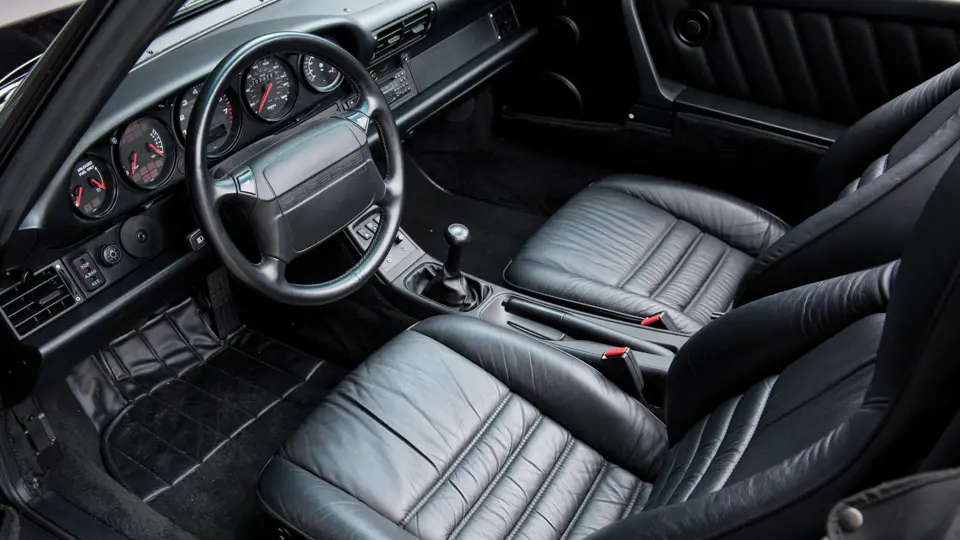

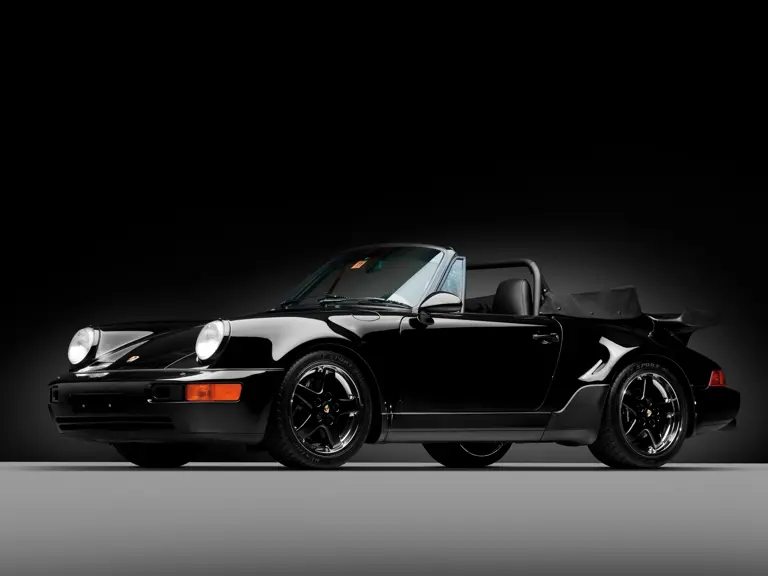
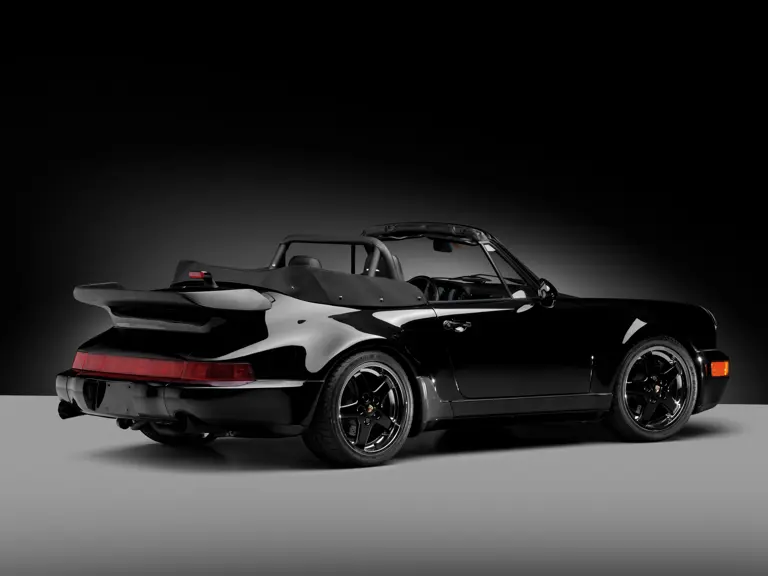
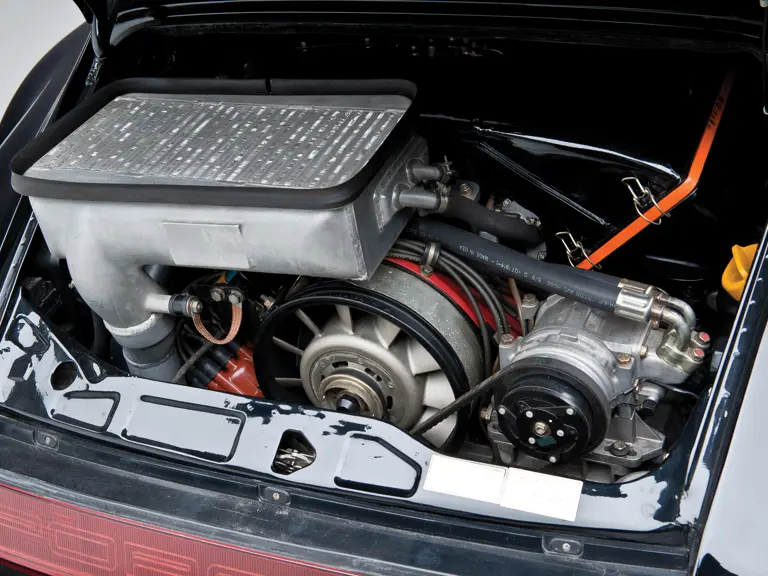




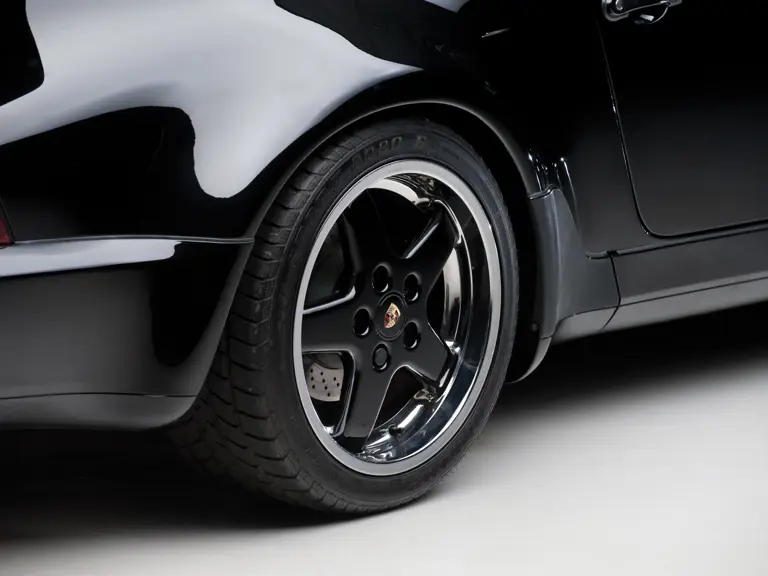




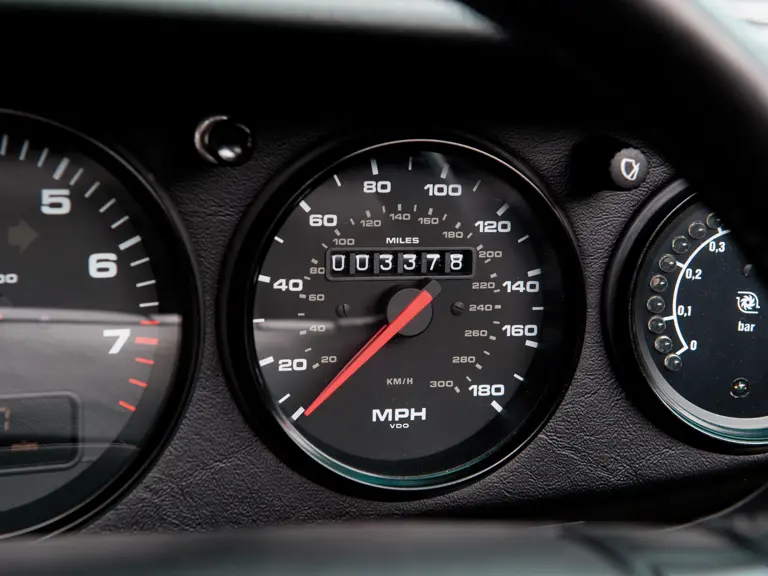


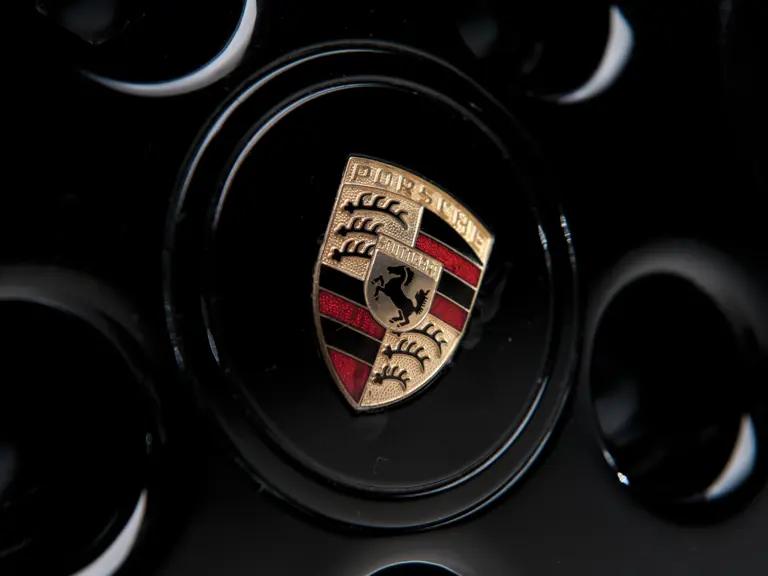

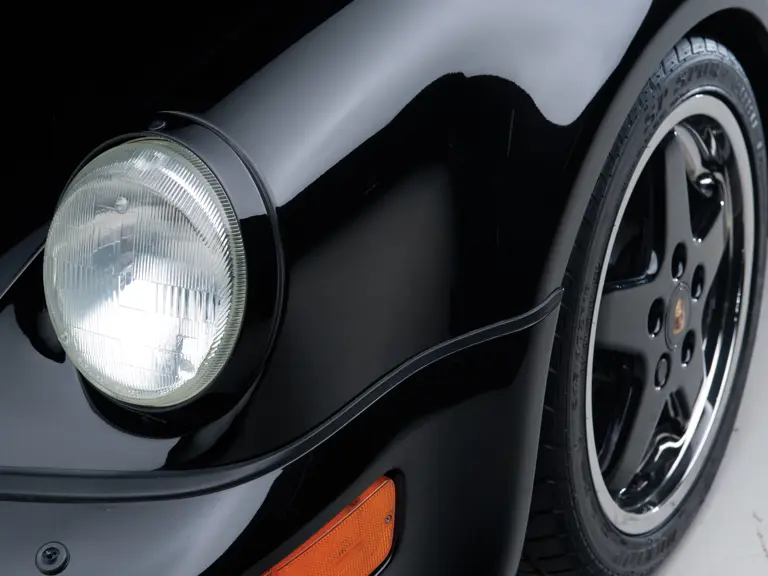

 | Hampton, New Hampshire
| Hampton, New Hampshire
